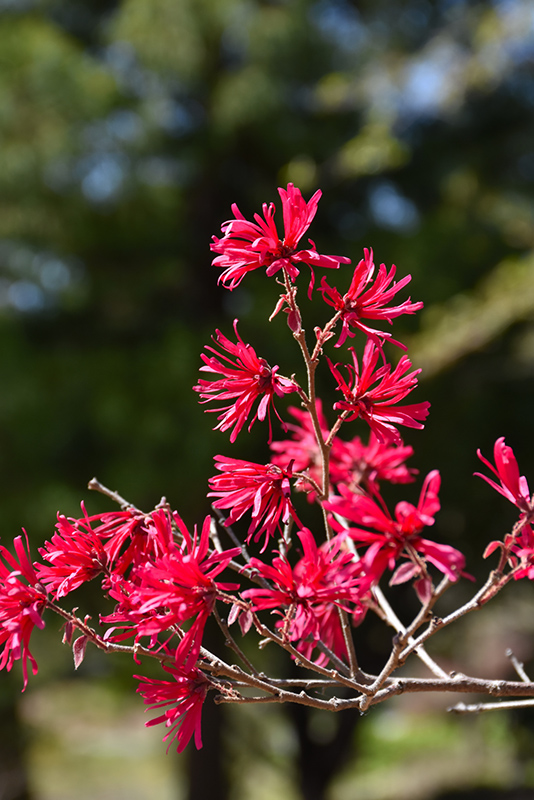Ever Red Sunset Fringeflower
Description
Gracefully layered branches covered with bright cherry red spider flowers in spring and repeats throughout the year; deep, chocolate burgundy foliage retains its color all year; part-shade is best; needs regular watering, especially in midsummer heat
Landscape Attributes
Ever Red Sunset Fringeflower is a multi-stemmed evergreen perennial with a shapely form and gracefully arching foliage. Its relatively fine texture sets it apart from other garden plants with less refined foliage.
Ever Red Sunset Fringeflower is recommended for the following landscape applications;
Planting & Growing
Ever Red Sunset Fringeflower will grow to be about 6 feet tall at maturity, with a spread of 6 feet. Although it is technically a woody plant, this fast-growing plant can be expected to behave as a perennial in our climate if planted outdoors over the winter, usually regrowing from its base (crown) the following year. As such, gardeners should take into consideration that it will perform differently than it would in its native habitat.
This plant does best in full sun to partial shade. It does best in average to evenly moist conditions, but will not tolerate standing water. It is particular about its soil conditions, with a strong preference for rich, acidic soils. It is somewhat tolerant of urban pollution. Consider applying a thick mulch around the root zone in winter to protect it in exposed locations or colder microclimates. This is a selected variety of a species not originally from North America.
Ever Red Sunset Fringeflower is a fine choice for the garden, but it is also a good selection for planting in outdoor pots and containers. Because of its height, it is often used as a 'thriller' in the 'spiller-thriller-filler' container combination; plant it near the center of the pot, surrounded by smaller plants and those that spill over the edges. It is even sizeable enough that it can be grown alone in a suitable container. Note that when growing plants in outdoor containers and baskets, they may require more frequent waterings than they would in the yard or garden. Be aware that in our climate, this plant may be too tender to survive the winter if left outdoors in a container. Contact our experts for more information on how to protect it over the winter months.

